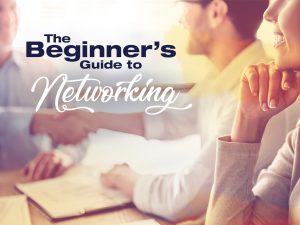
Embarking on a career transition is an exciting (and often scary!) leap into the unknown. As you stand on the precipice of change, you might wonder whether a cover letter is still relevant in today’s digital age. Well, the truth is, yes, it absolutely is! In fact, a well-crafted cover letter can be your secret weapon, especially if you are looking to change careers.
Maybe you want to do more meaningful work or increase your earning potential. Maybe you are ready to do something different—take on a fresh challenge. Or maybe you’re ready to explore an interest that’s been simmering under the surface for ages. No matter what is driving your decision, making a shift to a new career path goes beyond the usual application routine. It is about having a cover letter that not only introduces who you are but also smoothly conveys your transferable skills and the driving passion behind your career change. This is where the real magic happens—capturing your potential employer’s attention and showing them you’re ready for this exciting new venture.
Crafting a standout cover letter is your chance to make a compelling argument that ties your past experiences to your future aspirations. Throughout this article, we will dish out essential tips to help you create an impactful cover letter that not only bridges your career transition but also positions you as the ideal candidate for the new role you’re aiming for.
Tip #1 – Assess Your Transferable Skills to Your New Career Path
Transferable skills, or portable skills, are skills you take with you wherever you work. They ensure you are well-equipped to perform your future job to the standards of your employer.
Once you officially decide to make a career transition, don’t feel like you need to cast all your past work experiences aside. In fact, you will want to draw on your previous experiences even more as they serve as the foundation for your future success.
Start by taking a look back at your past roles and experiences. Identify the skills you have developed that can smoothly transition into your new field. These are the adaptable abilities that are relevant across industries—skills like effective communication, problem-solving, project management, teamwork, adaptability, and leadership. Examine each role you have held closely and pinpoint the skills that can transcend industries and remain valuable.
Once you have recognized your transferable skills, you can then bridge the gap between your past and the new path you are pursuing. Consider how these skills can bring unique value to your new career field. For example, if you are transitioning from administrative staffing to information technology consulting, your knack for meticulous organization and efficient management can be leveraged in overseeing complex IT projects. Similarly, if you are moving from light industrial staffing to medical recruitment, your skills in fostering teamwork and adaptability can prove invaluable in orchestrating medical teams for efficient patient care. The key is to identify the common threads that link your skills to the requirements of your new role.
Tip #2 – Showcase Your Relevant Transferrable Skills
When you’re transitioning into a new career field, it’s essential to understand the power of skill marketing.
Imagine you’re currently working in accounting, but your goal is to shift into IT recruiting. In this scenario, your cover letter should serve as a platform to market your skills effectively. Begin by reflecting on your achievements and experiences in accounting. However, don’t just stop there. Identify the key successes that relate to IT recruiting, such as your effective communication skills, analytical mindset, or perhaps experience with data analysis, which are highly relevant in the IT sector.
Skills-Based Hiring Is “In”
In the contemporary job market, skills-based hiring is on the rise. Companies are increasingly focusing on hiring candidates based on their skills rather than solely on their experience. Recent statistics show that a whopping 76% of employers now employ skills-based hiring strategies to find new talent. This trend is a golden opportunity for career changers.
Consider how your transferable skills align with the requirements of your desired field. If you’ve honed skills that are in high demand, such as problem-solving, adaptability, or project management, emphasize these qualities in your cover letter. Explain how these skills have been instrumental in your previous role and articulate how they can be seamlessly applied to the new career path. By doing so, you’re not just showing your adaptability; you’re also demonstrating your understanding of the skills needed in the new field.
Bridging the Gap With Your Skill Sets
As you craft your cover letter, focus on bridging the gap between your current expertise and the skills demanded in your target field. For example, if you’re shifting from accounting to IT recruiting, you can highlight your ability to analyze complex financial data, a skill that translates seamlessly into understanding technical job requirements. You might also emphasize your attention to detail, which is crucial in both fields, whether it’s balancing financial statements or matching technical qualifications with job descriptions.
Tip #3 – Address Your Motivation for a Career Change
When you’re making a significant career shift, addressing the elephant in the room—your ‘why’ for the change—should be covered in your cover letter. But don’t just simply state that you want a new challenge; explain why you’re ready for this change, and how it aligns with your personal and professional goals.
There are various valid reasons for changing careers, such as economic factors, the desire for career advancement, or seeking a better work-life balance. Be transparent about your motivation when crafting your cover letter. For instance, if you’re transitioning from accounting to IT recruiting, you can explain that you’ve always been fascinated by the tech industry and how it shapes the modern world. Mention how you see this shift as a natural progression in your career, driven by your passion for connecting top talent with innovative companies.
Demonstrate Your Genuine Interest and Commitment
Something you might come up against during the interview process is skepticism for your commitment to embarking on a new career path. Hiring managers want to see that you’re not just making a spur-of-the-moment decision but are genuinely invested in your career change. Share specific experiences or activities that reflect your dedication to this transition.
For example, if you’re shifting from sales to environmental conservation, you can discuss your volunteer work with local environmental organizations or how you’ve pursued relevant certifications or coursework. This shows that you’re actively working to acquire the knowledge and skills needed for the new role. It’s also a testament to your commitment to making a positive impact in the field, which can be incredibly appealing to potential employers.
Tip #4 – Go Beyond the Basics to Stand Out
In today’s competitive job market, a one-size-fits-all cover letter simply won’t cut it. To maximize your chances of standing out, it’s crucial to demonstrate your knowledge about the industry you’re applying to and the specific company you’re reaching out to. This research-intensive approach not only shows your dedication but also helps your cover letter resonate with the hiring manager.
Start by delving into the industry trends, challenges, and key players. Understand the unique dynamics and demands of the field you’re entering. This knowledge will enable you to speak the industry’s language in your cover letter, showcasing that you’re well-versed and genuinely interested.
When it comes to researching the company, go beyond a cursory glance at their website. Dive deep into their mission, values, culture, recent achievements, and even their competitors. Look for any recent news articles or press releases that might provide insights into their current priorities. The goal here is to tailor your cover letter in a way that not only aligns with the company’s goals but also demonstrates your alignment with their values and culture.
How to Address the Hiring Manager’s Needs and Align With Job Requirements—in a Concise Way
The heart of an effective cover letter lies in addressing the hiring manager’s needs and aligning your qualifications with the job requirements—but doing so concisely.
Start by carefully analyzing the job description. Highlight the key skills, qualifications, and responsibilities mentioned therein. Then, craft your cover letter to directly respond to these points. Use keywords and phrases from the job description to demonstrate that you understand what the role entails and that you possess the required skills.
Additionally, consider the broader needs of the hiring manager and the company. What challenges are they likely facing in their industry or department? How can you, with your unique skill set and experiences, contribute to addressing these challenges? Your cover letter should not only show that you can do the job but also that you’re eager to help the company excel in its endeavors.
Furthermore, personalizing your cover letter extends beyond just addressing the job requirements. It’s also about letting your personality shine through. While maintaining professionalism, inject some of your authentic self into the letter. This provides the potential employer with a glimpse of your character and whether you’d be a good fit for their company culture.
Tip #5 – Structure Your Cover Letter to Create a Powerful First Impression
When it comes to crafting an effective cover letter, the structure is your roadmap to making a compelling first impression. It’s divided into three essential sections: the introduction, body, and conclusion. Each part plays a unique role in conveying your suitability for the role and your passion for the new career path.
Introduction: Captivate the Reader and Express Enthusiasm
In the introductory section, your goal is to capture the reader’s attention and make them eager to delve further into your cover letter. This is your chance to create a hook, a memorable opening that sets the tone for the rest of your letter. It’s also where you should convey your enthusiasm for the new career field or the specific company you’re applying to.
Consider starting with a strong statement of intent, outlining your immediate interest in the role and how it aligns with your career aspirations. Alternatively, share an engaging anecdote from your career journey or a recent project that reflects your dedication to your new path. If you have a personal connection to the industry, such as a transformative experience or a lifelong passion, this is the place to share it. This not only introduces you but also conveys your motivation for the career transition, giving the reader a glimpse into your professional narrative.
Body: Showcase Your Skills, Experience and Company Alignment
The body of your cover letter is where you substantiate your claims and showcase how you’re the perfect fit for the role. This section should be tailored to the job description, with a focus on highlighting your transferable skills and relevant experiences. This is where keywords from the job posting come into play; they help align your qualifications with the specific requirements of the position.
Start by addressing the key skills, qualifications, and responsibilities outlined in the job description. Use these as anchors to illustrate how your past experiences have equipped you with the capabilities needed for success in the new role. Share specific achievements and accomplishments from your previous career that demonstrate your competence and adaptability.
Moreover, don’t forget to demonstrate your general interest in and understanding of the company you’re applying to. Discuss the company’s mission statement and values, showcasing your research and alignment with their ethos. Leverage recent headlines or industry trends to demonstrate that you’re in sync with the company’s goals. This not only shows that you’re a qualified candidate but also a culturally fit one.
Conclusion: Express Gratitude, Reiterate Interest, and Invite Dialogue
The conclusion is the parting impression you leave on the reader. Express your gratitude for their time and consideration. Reiterate your strong interest in the role and your enthusiasm for contributing to the company’s success. This is your moment to reinforce your eagerness to take the next steps.
Consider ending with a powerful call to action, such as, “I look forward to the opportunity to discuss how my qualifications will benefit your organization in more detail.” This proactive approach invites further discussion and demonstrates your eagerness to move forward in the hiring process. Your conclusion should leave the reader with a sense of professionalism, commitment, and genuine interest in the position.
Get the Support You Need With Peoplelink Staffing
Transitioning careers can be both exciting and daunting, even if you know you are ready to make a move. As you embark on this journey, remember that your cover letter is your trusted guide, helping you navigate this change.
Expertise matters, but your cover letter is more than a list of skills. It’s your story. It’s about explaining why you’re switching paths and revealing the passion driving this change. It’s your chance to highlight how your transferable skills and experiences align seamlessly with your new direction.
And most of all, remember that you are not alone on this journey. Career shifts can feel overwhelming, but Peoplelink Staffing specializes in supporting professionals like you as you navigate these changes. We’re here to provide the insights and expertise to create a cover letter that tells your story and helps you thrive in your new venture. Reach out today and let’s start your next chapter together.



